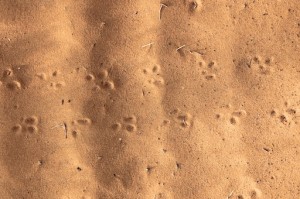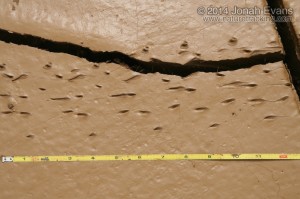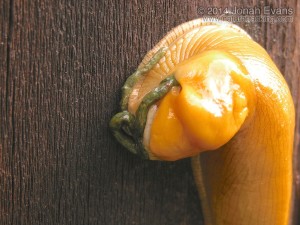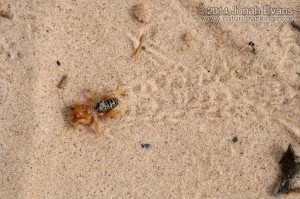Invertebrates are animals without vertebrae. This group includes arachnids (spiders & scorpions), crustaceans, gastropods (snails, slugs, etc), insects, and others. While an estimated 97% of all animals are invertebrates, their tracks and sign are often overlooked by trackers. Insect tracks are among the most encountered of all invertebrate tracks and they are an extremely diverse and interesting group of animals to explore.
Insect & Invertebrate Tracks Gallery Full Species List
- Ant Mounds
- Ant Tracks
- Ant Trail
- Antlion Trail
- Antlion Traps
- Banana Slug Scat
- Banana Slug Slime
- Beetle Eating Grasshopper
- Beetle Tracks
- Caterpillar Frass
- Caterpillar Scat
- Caterpillar Tracks
- Centipede Tracks
- Chinese Mantis Ootheca
- Cicada Holes
- Cicada Shells
- Crab Tracks
- Crayfish Burrow
- Crayfish Chimney
- Crayfish Tracks
- Cricket Tracks
- Dragonfly Larva Tracks
- Dragonfly Track
- Dung Beetle Scat
- Ghost Crab Feeding Sign
- Ghost Crab Tracks
- Hermit Crab Tracks
- Jerusalem Cricket Tracks
- Katydid Scat
- Leafcutter Bee Sign
- Millipede Tracks
- Mole Cricket Ridges
- Mud Dauber Digs
- Mussel Predation by Raccons
- Praying Mantis Ootheca
- Roundworm Tracks
- Say’s Stink Bug
- Scorpion Tracks
- Slug Feeding Sign
- Slug Scat
- Snail Scat
- Sow Bug Tracks
- Sphinx Moth Larva Frass
- Spider Burrow
- Spider Leaf Nest
- Spider Tracks
- Swallow Digs and Mud Dauber Digs
- Tarantula Tracks
- Twig Girdler Sign
- Walking Stick Tracks
- Wasp and Burrow
- Worm ScatCastings
- Worm Trail
Arachnids (spiders and scorpions) have 8 legs and therefore leave tracks with groups of 4 dots on each side of the trail. Sometimes it can be quite difficult to make out all 4 dots when the hindmost foot disrupts the marks from a previous foot.
Crustaceans (primarily crayfish and crabs here) have quite distinctive tracks. Crayfish walk primarily on 8 legs and have small claws at the end of their legs. If you look closely at their tracks you will find pairs of dots from each part of the claw. This is a very helpful characteristic for identification. Also look for two drag marks created by the sides of the tail. Crabs have 8 legs and walk sideways and leave a repetitive somewhat tire-tread like trail. Some species of crabs like horseshoe and hermit crabs leave distinct patterns that allow for easy identification.
Gastropods (mainly slugs and snails here) leave a number of signs including: slime trails, scats, and feeding signs. Slugs often feed on algae on tree bark and other surfaces and leave distinctive patterns in the process. Snail and slug scat forms long twisted ropes that are easily identified in the field.
Insects are an enormous group of animals. Insects that often leave tracks include: ants, beetles, crickets, grasshoppers, mantids, millipedes, wasps, and many, many more. Insects can be very difficult to identify from an actual specimen and identifying them to the species from tracks can at times be impossible. Sometimes the best we can do is identify to the order level.
The following images are the recent invertebrate track observations from the North American Animal Tracks Database. This is an iNaturalist project where trackers share observations and help each other learn about animal tracks, all while contributing to scientific research.
Despite the fact that invertebrate tracks and sign are all around us and frequently encountered, there are very few guides available that will help you identify their tracks. Aside from the comprehensive coverage of the topic in Tracks and Sign of Insects and Other Invertebrates, most field guides barely scratch the surface. I’ve included a few of the guides that include insects or invertebrates. If you decide to purchase any of these guides, using the links below will help support future developments to this website.
Tracks & Sign of Insects and Other Invertebrates opened my eyes to an entire new world of animal tracking. Charley Eiseman and Noah Charney included an incredible amount of insect sign, from feeding signs to egg cases to scats. This guide is a valuable resource for anyone interested in learning about insects and it is a great way for trackers to expand their knowledge. These guys also have some great videos on identifying insect tracks and sign on their website.
Animal Tracks and Scat of California is a regional guide, but many of the species are found throughout North America. This guide includes mammals, birds, and even some reptiles, amphibians, and invertebrates. It is a great general tracking guide (full disclosure: I am a co-author of this guide) and is a great bet if you want a single guide that covers more than just mammals. This book includes some drawings of various insect and invertebrate trails.
Wildlife of the Pacific Northwest is a regional guide written by my friend and excellent tracker David Moskowitz. While this book primarily focuses on the Northwest, a lot of information applies nationwide. This tracking guide includes mammals, birds, reptiles, amphibians, and invertebrates. It dedicates 8 pages specifically to insects and other invertebrates at the end and has a really cool section on identifying beetle galleries created in tree bark. The guide also contains excellent original artwork by Dave and some incredible photography.











